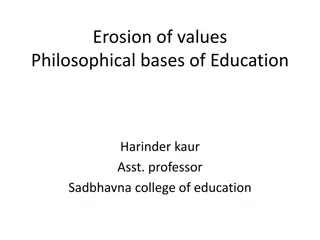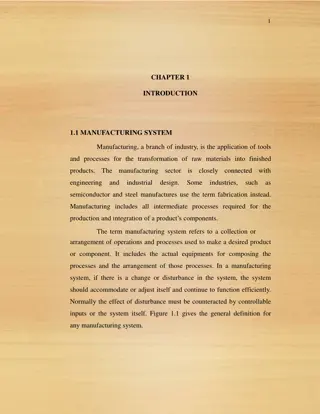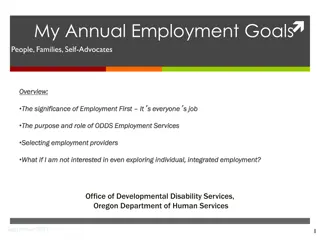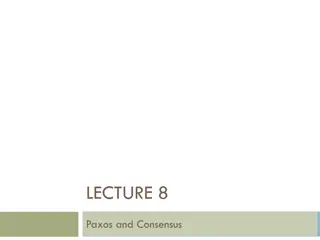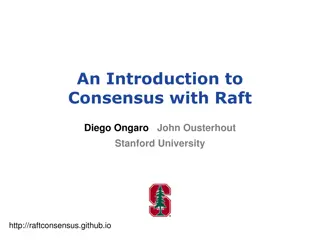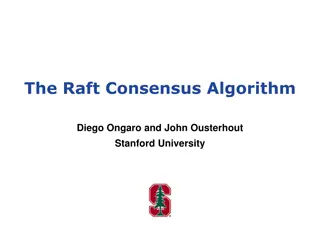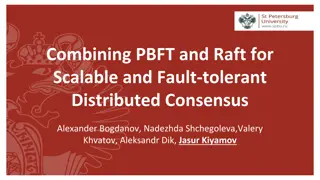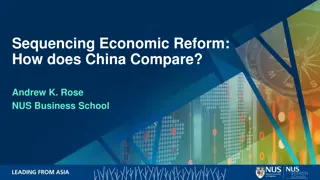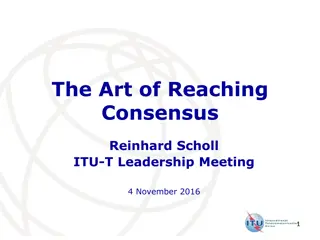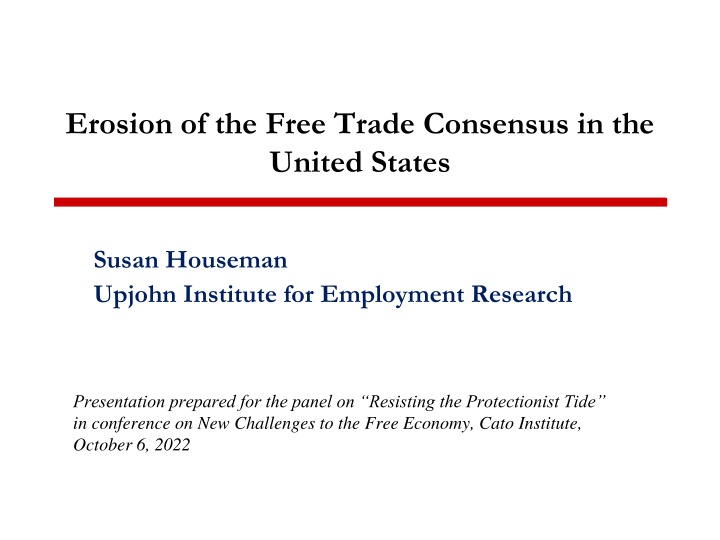
Erosion of Free Trade Consensus in the United States: Manufacturing Employment Decline
The presentation examines the decline in U.S. manufacturing employment and challenges the prevailing notion that job losses are solely due to productivity and automation. It delves into the role of the computer and electronic products industry in driving output and productivity growth, highlighting the shifting global production landscape and employment losses in these sectors.
Download Presentation

Please find below an Image/Link to download the presentation.
The content on the website is provided AS IS for your information and personal use only. It may not be sold, licensed, or shared on other websites without obtaining consent from the author. If you encounter any issues during the download, it is possible that the publisher has removed the file from their server.
You are allowed to download the files provided on this website for personal or commercial use, subject to the condition that they are used lawfully. All files are the property of their respective owners.
The content on the website is provided AS IS for your information and personal use only. It may not be sold, licensed, or shared on other websites without obtaining consent from the author.
E N D
Presentation Transcript
Erosion of the Free Trade Consensus in the United States Susan Houseman Upjohn Institute for Employment Research Presentation prepared for the panel on Resisting the Protectionist Tide in conference on New Challenges to the Free Economy, Cato Institute, October 6, 2022
Precipitous and unprecedented decline in U.S. manufacturing employment in 2000s Manufacturing Employment, 1947-2021 20 19 18 17 16 Emp, millions 15 14 13 12 11 10 2003 2005 2007 2009 2001 2021 1947 1949 1953 1955 1957 1959 1963 1965 1967 1969 1973 1975 1977 1979 1983 1985 1987 1989 1993 1995 1997 1999 2013 2015 2017 2019 1951 1961 1971 1981 1991 2011 2000-2007 (both business cycle peaks) manufacturing lost 3.4 m. jobs, 20% of employment base Hard hit again in Great Recession. Although some recovery, mfg employment down about 5 m. jobs, or 28% since 2000.
Initial prevailing view of analysts, media, politicians U.S. manufacturing sector is healthy point to robust output growth and strong productivity numbers Job losses largely caused by productivity in the form of automation Workers simply victims of their own success Real GDP: Manufacturing and Private Industry 350 300 Real GDP Index, 1977=100 250 200 150 100 50 0 Private industries, real GDP Manufacturing, real GDP
But one industrycomputer & electronic products driving apparent robust output and productivity growth Real GDP, Private Industry and Manufacturing, without Computer Industry 350 300 250 Index, 1977=100 200 150 100 50 0 Private industries, less computers Manufacturing, less computers w/o computer industry, mfg GDP growth 45% of private sector GDP growth, 1979-2000; 24% from 2000-2019 Mfg output slightly lower in 2019 than in 2007 (Houseman 2018) Mfg productivity no higher than aggregate productivity w/o computer industry (Baily and Bosworth 2014)
What was happening in computer/semiconductor industries? Accounts for <15% of manufacturing GDP Extraordinary real output and productivity growth reflects statistical adjustment for rapid advances in product quality o In computer and electronic products and by extension all manufacturing robust growth resulted from product not process improvements Despite driving apparent robust domestic manufacturing output growth, locus of production shifting to Asia (Houseman, Bartik, Sturgeon 2016) Employment losses in computer related industries reflect shifting global locus of production
Research evidence on causes and effects of manufacturing s employment collapse Pointed to large effects trade had on manufacturing employment from o High value of dollar (Campbell 2017) o Surge in imports (Autor, Dorn, Hanson 2013; Pierce and Schott 2016) o Multinational offshoring of production, lack of domestic investment (e.g., Boehm et al. 2019 ) o Trade causing large economic disruptions/spillovers in affected regions (Acemoglu et al. 2016) and lower innovation (Autor et al. 2017, Pierce and Schott 2017) Failed to find causal link between technology investments and employment declines o No evidence of a technology shock that could have caused sharp employment decline Acemoglu et al. 2014; Autor, Dorn, Hanson 2015; Acemoglu & Restrepo 2017; Graetz and Michaels 2018
New consensus 2016 election: Trump and Sanders argued that losses reflect failed trade policy Emerging new consensus that acknowledges large role of trade played in manufacturing s precipitous employment decline No surprise that political swing toward protectionism o Manufacturing employment collapse in early 2000s was economically and politically destabilizing Supply chain disruptions during pandemic underscored US vulnerabilities to trade and reinforced protectionist sentiments
Policy considerations Trade expansion generally beneficial on net for country but not always o E.g., circumstances in which trade leads to significant loss of US comparative advantage in high-tech sectors (Baumol and Gomory 2000; Samuelson 2004) o Need to consider optimal policy when trading partners behaving as mechantilists U.S. needs a healthy manufacturing sector to sustain innovation and a healthy economy and for national security o Not a clear dichotomy between manufacturing and services: many services, including IT services, embedded in products o Manufacturing and R&D often need to be co-located o Loss of manufacturing ecosystem is undermining ability of country to innovate lesson of MIT initiative on Production in the Innovation Economy (2013)
Links for further background and references Understanding the Decline of U.S. Manufacturing Employment EconTalk podcast

